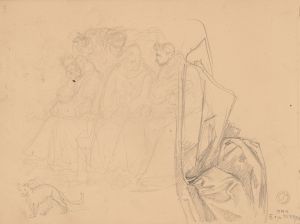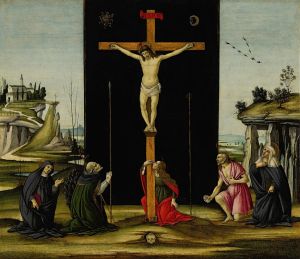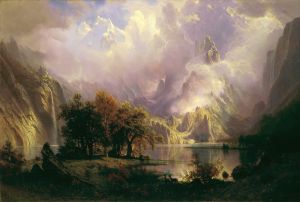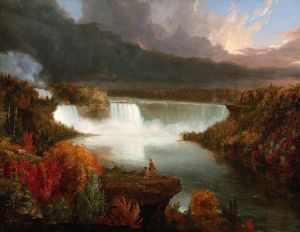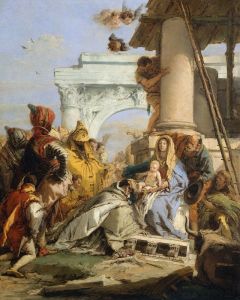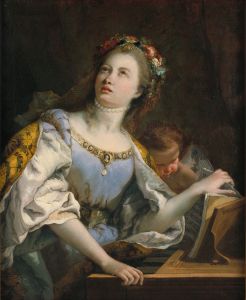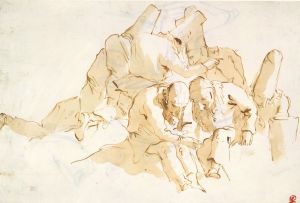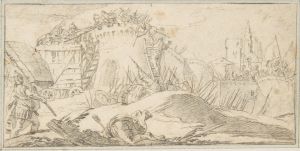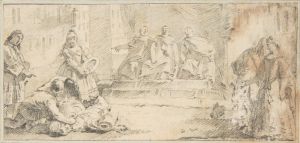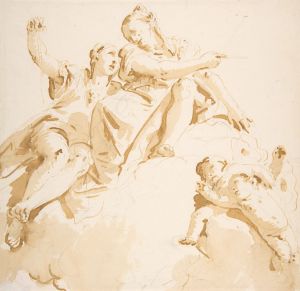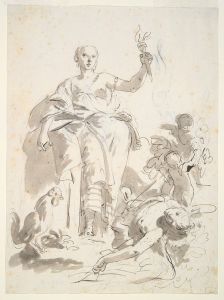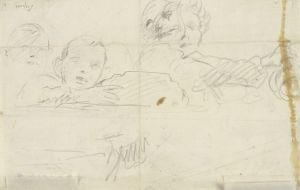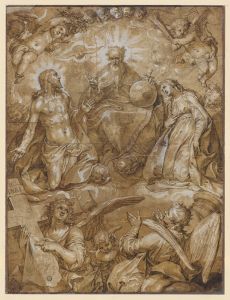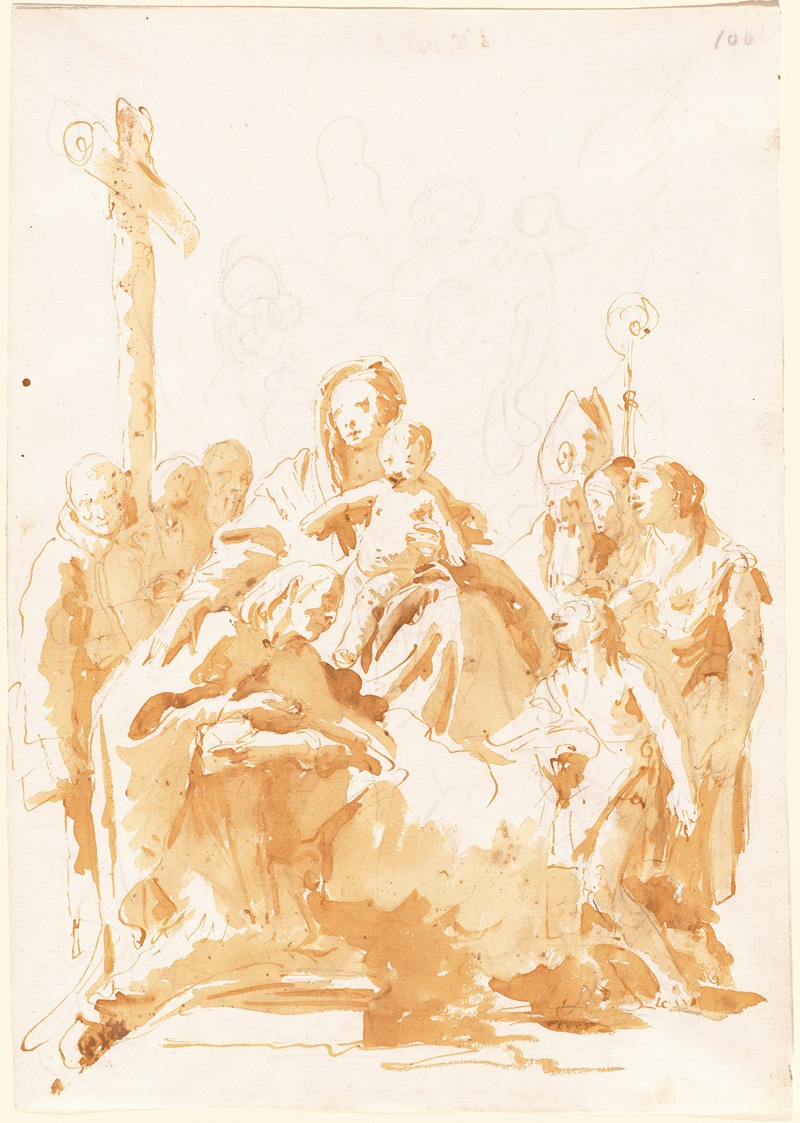
The Virgin and Child Adored by Bishops, Monks and Women
A hand-painted replica of Giovanni Battista Tiepolo’s masterpiece The Virgin and Child Adored by Bishops, Monks and Women, meticulously crafted by professional artists to capture the true essence of the original. Each piece is created with museum-quality canvas and rare mineral pigments, carefully painted by experienced artists with delicate brushstrokes and rich, layered colors to perfectly recreate the texture of the original artwork. Unlike machine-printed reproductions, this hand-painted version brings the painting to life, infused with the artist’s emotions and skill in every stroke. Whether for personal collection or home decoration, it instantly elevates the artistic atmosphere of any space.
Giovanni Battista Tiepolo, an eminent Italian painter of the 18th century, is renowned for his grand and luminous frescoes and paintings that embody the Rococo style. One of his notable works is "The Virgin and Child Adored by Bishops, Monks and Women." This painting exemplifies Tiepolo's mastery in composition, use of color, and ability to convey religious themes with grace and elegance.
"The Virgin and Child Adored by Bishops, Monks and Women" is a religious painting that depicts the Virgin Mary holding the Christ Child, surrounded by a group of worshippers that include bishops, monks, and women. This composition is typical of Tiepolo's work, which often features large groups of figures in dynamic poses, interacting with each other in a harmonious and balanced manner. The figures are arranged in a way that draws the viewer's eye towards the central figures of the Virgin and Child, emphasizing their importance and divinity.
Tiepolo's use of light and color in this painting is particularly noteworthy. He employs a soft, diffused light that bathes the figures in a warm glow, creating a sense of serenity and holiness. The colors are vibrant yet harmonious, with the rich reds, blues, and golds of the garments contrasting beautifully with the softer tones of the background. This use of color and light not only enhances the visual appeal of the painting but also serves to highlight the spiritual significance of the scene.
The painting reflects Tiepolo's ability to convey complex theological ideas through visual means. The presence of bishops and monks signifies the Church's veneration of the Virgin Mary and the Christ Child, while the inclusion of women suggests the universal appeal and accessibility of the divine figures. The gestures and expressions of the figures convey a sense of reverence and adoration, inviting the viewer to partake in the spiritual experience.
Tiepolo's work is characterized by its dynamic compositions and dramatic use of perspective, and "The Virgin and Child Adored by Bishops, Monks and Women" is no exception. The figures are arranged in a circular composition, creating a sense of movement and flow that guides the viewer's eye around the painting. This dynamic arrangement, combined with the use of foreshortening and perspective, gives the painting a sense of depth and three-dimensionality.
Giovanni Battista Tiepolo was a prolific artist, and his works can be found in churches, palaces, and museums across Europe. His ability to blend the grandeur of Baroque art with the lightness and elegance of the Rococo style made him one of the most sought-after painters of his time. "The Virgin and Child Adored by Bishops, Monks and Women" is a testament to his skill and creativity, showcasing his talent for creating visually stunning and spiritually profound works of art.
In summary, "The Virgin and Child Adored by Bishops, Monks and Women" is a quintessential example of Tiepolo's artistry, combining technical skill with a deep understanding of religious themes. Through his use of light, color, and composition, Tiepolo creates a painting that is both beautiful and meaningful, inviting viewers to reflect on the spiritual significance of the Virgin Mary and the Christ Child.





